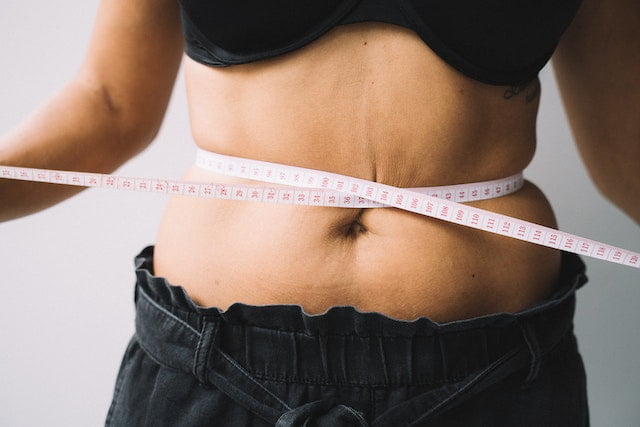A gastric balloon is a noninvasive weight loss procedure that does not require surgery. It can help people lose significant weight, easing symptoms of obesity-related conditions such as Type 2 diabetes and heart disease.
Balloon insertion involves having a flexible telescope (endoscope) inserted into your throat. You may experience mild discomfort during the procedure.
What is a Gastric Balloon?
Intragastric balloon therapy is a temporary nonsurgical procedure that involves placing a soft, saline-filled balloon in your stomach. This small, space-occupying device promotes weight loss by restricting the amount of food you can eat and promoting feelings of satiation. In addition, it can slow down digestion and improve nutrient absorption.
The FDA approves the Orbera and Reshape balloons, and can be placed in a quick outpatient procedure under light sedation. The doctor inserts a narrow tube-like camera device called an endoscope down your throat and into the stomach to place the balloon. The process takes a half-hour, and you can return home soon after.
During the first few days after balloon placement, you will likely experience nausea, vomiting, or stomach cramping that should go away within a week. If your symptoms persist, a gastrointestinal endoscopist may recommend Prilosec or another acid reflux medication. You will start with a liquid diet and gradually transition to a soft or full-food diet designed by your nutritionist.
Most people lose a significant amount of weight with the balloon, which can help relieve many physical and psychological complaints associated with obesity. This experience can be the catalyst to sustain a healthy lifestyle and make permanent changes in your diet and exercise habits. Intragastric balloon therapy can also reduce or eliminate many comorbidities, including diabetes, hypertension, sleep apnea, and joint problems.
What is a Sleeve Gastrectomy?
In this minimally invasive outpatient procedure, doctors insert an intragastric balloon—a soft, silicone balloon-like device temporarily inserted into the stomach. During this procedure, you will be under sedation. Before placing the balloon, a doctor uses an endoscope—a narrow, lighted tube with a camera attached—to inspect your esophagus, stomach, and small bowel. If they discover no conditions preventing the procedure, they attach a deflated balloon to the end of the endoscope and guide it through your mouth and into the stomach. Once in place, the balloon is inflated with saline to a desirable size.
The balloon occupies space in the stomach, slowing gastric emptying and training you to feel full after smaller meals. It is a temporary measure left in place for up to six months. It is typically used for people with a body mass index (BMI) of 30 or higher.
Once the balloon is removed, you can begin eating solid food again. You will work closely with a member of your ORBERA team on diet and exercise. They may also prescribe acid reflux and anti-nausea medications. You should stick to a liquid diet for the first week or two, gradually adding soft foods and solids. Incorporate regular exercise, like walking, biking, or water aerobics, and add weight training.
What is a Gastric Bypass?
The gastric balloon offers a nonsurgical, reversible option to promote weight loss and improve obesity-related health conditions such as diabetes. During this outpatient procedure, your healthcare team places a soft silicone balloon in your stomach to partially fill it. This makes you feel full after smaller meals and reduces hunger between meals. It is a non-invasive, minimally invasive technique that takes 15 minutes to complete under sedation.
The balloon is filled with saline solution to occupy space in your stomach, leaving less room for food and drink. The balloon also changes how your stomach and intestines digest fat, so some fat isn’t absorbed. This helps you lose weight by lowering your caloric intake and improving your ability to exercise.
Once you have lost enough weight, your healthcare team will remove the balloon from your stomach. Then you will follow an eating plan that focuses on healthy foods and incorporates regular physical activity to maintain your long-term weight loss success.
The intragastric balloon is ideal for patients who want to make long-term, sustainable changes to their diet and lifestyle. It may help improve health conditions like joint pain, high blood pressure, and sleep apnea that can be caused by being obese. It may also be used as a bridge to weight loss surgery for patients who have not yet achieved a BMI below 40 (morbid obesity).
What is a Laparoscopic Roux-en-Y Gastric Bypass?
The gastric balloon procedure involves placing a soft, saline-filled, or air-filled (depending on your chosen model) ball inside your stomach to promote weight loss. It works by occupying space and limiting your stomach’s food-carrying capacity to encourage portion control.
The process is minimally invasive and performed using an endoscope – a narrow tube-like device equipped with lights and a camera that your doctor guides into your stomach and esophagus through the mouth. You are sedated for the procedure, which takes about 15 to 20 minutes.
Once the balloon is inserted, your diet will start with liquids and progress to soft foods for a few weeks while you adjust to life with a new tool in your belly. After about six months, we’ll remove the balloon and work with you to create and maintain healthy habits to support long-term weight loss success.
While a gastric balloon can only stay in place for about nine months, it’s an effective option to help you lose most excess weight. It can also improve obesity-related health risks, or comorbidities, including Type 2 diabetes, high blood pressure, and sleep apnoea. You’ll regain weight if you don’t change your eating and exercise habits after removing the gastric balloon. However, changing your lifestyle can sustain long-term weight loss and improve or even eliminate obesity-related health issues.




